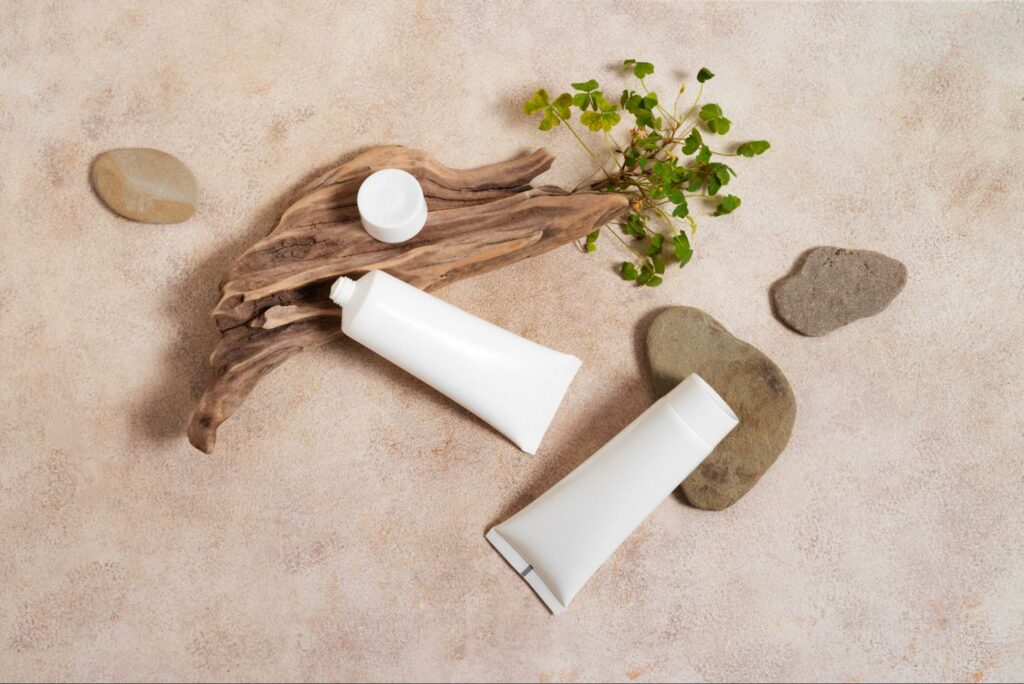
In today’s fast-paced, consumer-driven world, the beauty industry is booming. But with this explosion in growth comes a concerning surge in plastic waste. While our bathroom shelves and vanity tables may shimmer with beautifully packaged cosmetics and skincare products, the environmental cost is anything but beautiful.
Plastic’s Not-so-Pretty Impact on the Environment
The impact of plastic packaging in the beauty industry is staggering. Single-use plastic bottles, tubes, and containers are not only resource-intensive to produce but also contribute to the growing plastic waste issue. Only a small fraction of these plastics are ever recycled, with the rest ending up in landfills, oceans, and waterways, posing a significant threat to marine life and ecosystems.
Over time, these plastics break down into microplastics, infiltrating our water supplies and entering the food chain. The beauty industry, with its reliance on plastic packaging, is a significant contributor to this global problem.
The Sustainable Shift: Embracing Eco-friendly Alternatives
As sustainability becomes a top priority for both consumers and businesses, the beauty industry is faced with an urgent need to innovate. Fortunately, many brands are recognising the demand and exploring eco-friendly alternatives to traditional plastic packaging.
By making the switch, these companies aren’t just reducing their environmental footprint but are also meeting the sustainability goals set forth by consumers and global initiatives.
1. Paper and Cardboard Packaging
One of the most straightforward and readily available alternatives is paper and cardboard packaging. These materials are renewable, biodegradable, and often made from recycled content. Whether it’s lipstick tubes, foundation cases, or eyeshadow palettes, paper and cardboard offer a sturdy and eco-friendly alternative.
Importantly, the strategic use of virgin fibre in papermaking has further enhanced the benefits of paper-based packaging. Virgin fibre, when sustainably sourced, lends a consistent quality to the packaging material, ensuring durability and a refined finish.
Plus, with advancements in materials science, water-resistant and durable paper-based solutions are now available. Brands can also get creative with design, using eco-inks and sustainable printing methods, making their products stand out on the shelves while promoting an eco-conscious ethos.
2. Biodegradable Packaging
Taking it a step further, some companies are delving into biodegradable packaging solutions. Made from materials like cornstarch, algae, or mushroom roots, these containers decompose naturally when discarded, leaving no trace behind.
This is particularly advantageous for items that have shorter shelf lives or for brands looking to make a bold statement about their commitment to the environment. It’s essential, however, for consumers to understand that “biodegradable” doesn’t always mean it will degrade quickly; conditions like temperature and environment play a role. Thus, proper disposal and composting guidelines should accompany these products.
3. Refillable Packaging
Another innovative solution gaining traction is refillable packaging. Instead of discarding a container after the product is used up, consumers can bring it back to the store (or send it back) to be refilled. This not only minimises waste but also encourages brand loyalty.
Some high-end brands offer beautiful, durable containers designed to be kept and reused multiple times, while others utilise in-store refill stations. As consumers become more sustainability-focused, the appeal of holding onto a beautifully designed, eco-friendly container and simply refilling it becomes even more attractive.
Looking Ahead: The Future of Beauty Packaging
As the beauty industry continues to grow, it’s crucial that we prioritise sustainability in all facets, from product formulation to packaging. While the above alternatives to plastic packaging are promising, continuous innovation and commitment from both brands and consumers are needed.
Companies in the beauty sector should critically assess their current packaging strategies. Adopting eco-friendly alternatives is not just an environmental imperative; it aligns with the increasing consumer preference for sustainable products. Asia Pulp & Paper (APP) Sinar Mas has demonstrated that sustainable paper and packaging solutions are both feasible and effective. Their efforts in producing sustainable paper products present a model for industries, including the beauty sector, to follow.
For consumers, their purchasing power has never been more critical. By choosing brands that prioritise eco-friendly packaging, they are sending a clear message about the kind of future they want to see. Remember, every product purchased is a vote for the kind of world we want to live in. With leaders like APP showcasing the way, there’s a clear path for the industry to follow.
In the quest for beauty, let’s ensure the planet remains beautiful too.
